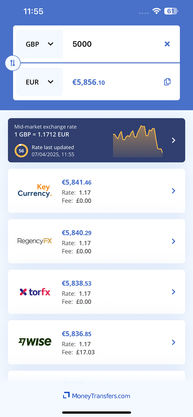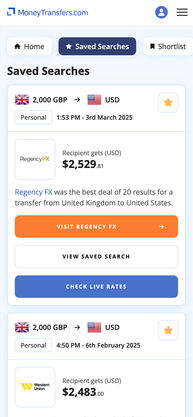SWIFT Code vs Routing Number: Which One Do You Need for Your Transfer?
In this guide we will cover the definition and functionalities of SWIFT codes and routing numbers, clearing up any confusion users may experience when sending or receiving an international money transfer.
Find a SWIFT Code
SWIFT codes are used for international transfers, and routing numbers are used for domestic transfers in the US. All US banks have their own SWIFT code and routing number.
Read on to find out more about SWIFT codes, routing numbers, and the differences between them.
The purpose of SWIFT codes and routing numbers
While both are used for money transfers, SWIFT codes and routing numbers are used for different reasons.
SWIFT codes
SWIFT codes identify banks internationally. They’re between 8 and 11 characters long and can be used to find:
The bank’s ‘bank code’
The country where the bank is located
The address of the bank’s head office
The bank branch
This information is communicated via the secure SWIFT (Society for Worldwide Interbank Financial Telecommunication) network during international transfers to identify where the money should be sent.
Routing number
Routing numbers are also used to identify banks, but they’re only used for domestic transfers within the US. They’re 9 digit codes which identify both the company you bank with and the location of the Federal Reserve bank your account is connected to.
SWIFT code and routing number format
SWIFT codes and routing numbers look quite different.
SWIFT code format
SWIFT codes are split into four codes, including a bank code, country code, head office location code, and a branch code.
For example:
BOFAUS3NXXX
BOFA: Bank code. These 4 letters usually look like a shortened version of the bank name.
US: Country code. These two letters represent the country the bank is in.
3N: Location code. These two characters indicate where the bank’s head office is located.
XXX: Branch code. The last three characters identify the specific branch of the bank. XXX usually refers to the bank's head office.
Routing number format
Routing numbers are 9-digit codes that reference the bank location where the account was opened. They may also be referred to as an American Bankers Association (ABA) routing number, or Routing Transfer Number (RTN).
For example:
061000052
0610: The first four digits identify the location of the Federal Reserve bank the account is connected to.
0005: The second four digits identify the bank.
2: The final digit is used to verify the routing number using a mathematical calculation.
Using SWIFT codes and routing numbers
You’ll often be asked to provide a SWIFT code if you’re making an international money transfer, either by wire transfer or via a money transfer provider. You’ll need to provide a routing number when you’re making a domestic transfer within the US, often by ACH, domestic wire transfer, or direct deposit.
How to find a SWIFT code
Your SWIFT code will be on both your bank statement and your online bank account. You can also use our SWIFT code calculator.
How to find a routing number
Your bank’s routing number will usually be listed under your account details in your online bank account. Alternatively, you can find it printed in the bottom left hand corner of your checks. It’s the first set of nine digits, which will begin with either a 0, 1, 2, or 3.
SWIFT codes and routing numbers - different codes used for different transfers
It’s useful to know what’s needed for different kinds of transfers. SWIFT codes are used for international transfers, and routing numbers are used for domestic transfers within the US. Make sure you know what’s needed for your transfer
FAQs
Is a SWIFT code the same as a routing number?
Where do I find my routing number and SWIFT code?
Do I need a SWIFT code to send an international transfer?
Do I need a routing number for an international transfer?
Related Content
Related Content
Contributors
.jpg)



